On arriving at the train station enroute to Jyväskylä from Helsinki airport, I wondered: Finland does not seem like a foreign country despite the snowy landscapes. There is familiarity in the recognition of faces milling around, in their responsiveness to my navigational questions.
That was the beginning of my memorable week-long exploration on a University of Jyväskylä / Global Innovation Network for Teaching and Learning (GINTL) small grant enabled trip (13th to 20th January 2024). While demographic and geographical differences were salient, cultural similarities with India were also plentiful.
STEAM through art
My visit started with a rejuvenating Sunday spent comfortably walking on fresh snow and being shown around the University by researchers at the Finnish Institute for Educational Research’s Innovative Learning Environments (ILE) group. The first working day was spent in thought-provoking discussions as part of a collaborative STEAM-exchange workshop at the University and the Jyväskylä Art Museum.


It was interesting to see the spirit of camaraderie and commitment in the group to educational issues and practical solutions for schools from a range of research areas and initiatives. My mind kept attempting to anchor presented concerns and outcomes with larger theoretical frameworks. Children’s artworks in the museum setting were thoughtfully produced: some along with Artificial Intelligence tools. The museum itself reflected this contemporaneity and open-ness in the setting and choice of exhibits. The productions further indicated scaffolding in the process of development of children’s creations. It was pleasant to browse through postcards and magnets at the Museum store showcasing works of well-known Finnish children’s book illustrators, evoking the country’s historically developed and aesthetically framed reading cultures.

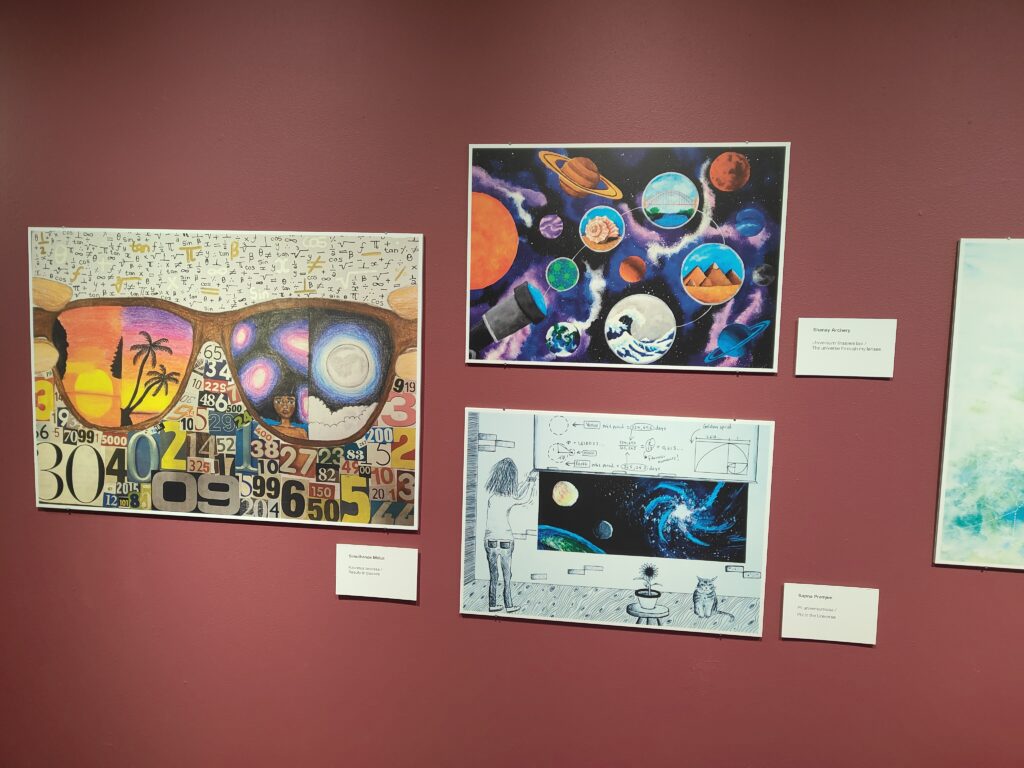
I enjoyed the pleasant vibes during paired collaboration and group discussion while participating in the technology well-being workshop and debrief session led by Kati Clements & Saana Mehtälä on the second day. The care and precision in formulating participant instructions culminating in the Lego prizes was exciting.
Thought-provoking school visits
School visits on the third day were thought-provoking. This was particularly so while witnessing attentive adolescent children in the upper secondary grades at the University of Jyväskylä teacher training school: the experimental research wing of the University. High school students in a Physics class were diligent in following instructions and conducting experiments, while the teacher traversed multiple educational technological tools. I was initially puzzled about children appearing largely homogenous in their engagement and behaviour. I then learnt that this group of excellent students had specially applied to study at the prestigious school, keen to further their academic interests.
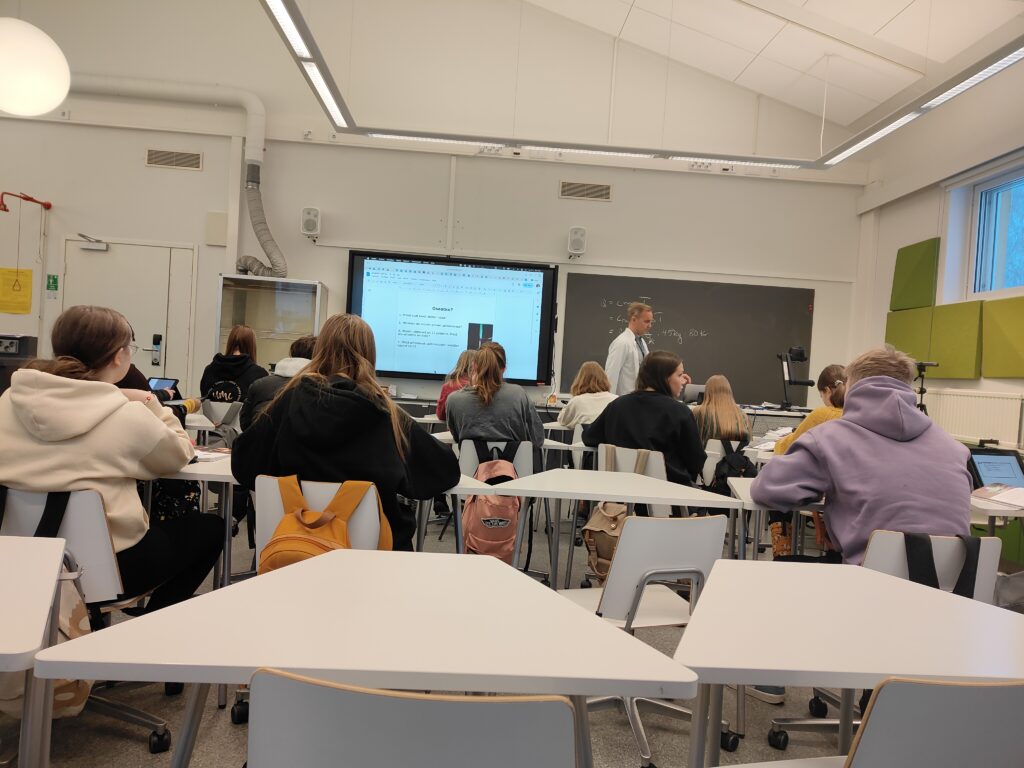
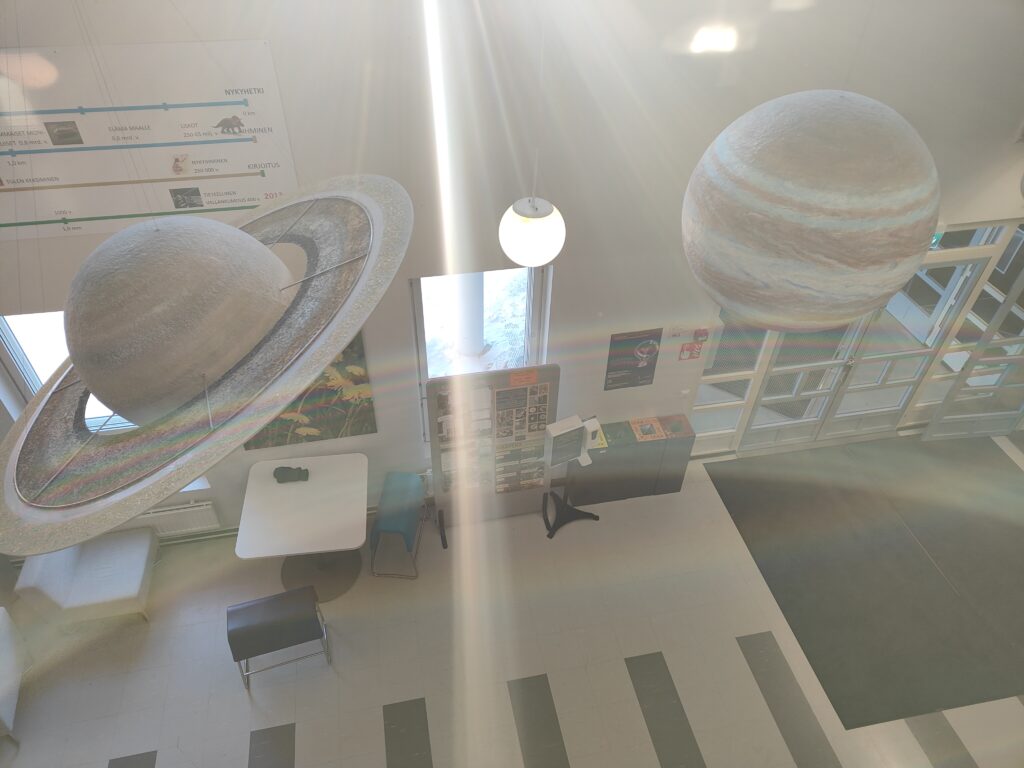
In a different Physics class compulsory for all students, another teacher demonstrated his effort in imagining and developing an immersive theme-based classroom environment.
His presence in the classroom was motivating and brought students into engaged participation along with overt displays of adolescent identities: playful but attentive. Our visit to the Jyväskylä Christian School with Jukka Sinnemäki clearly demonstrated the school’s emphasis on the ethics of working with hands. Students were happily immersed in metalwork, woodwork, cookery and musical instruments making me recall our Indian thinker, Gandhi’s focus on productive-work-centred curricula. A group of kindergartners were busily working on small wooden frames bearing their names: some of them a tad bit unhappy about not forming the perfect piece! On the other hand, there was competing space for technological sophistry in the use of fitness equipment.
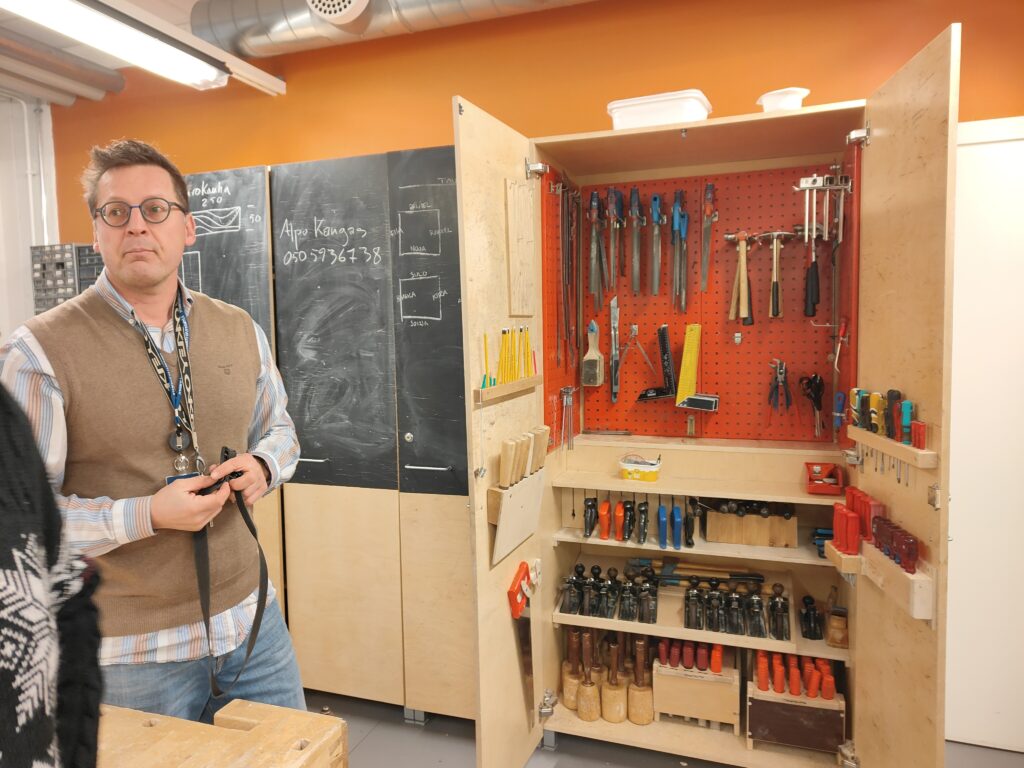
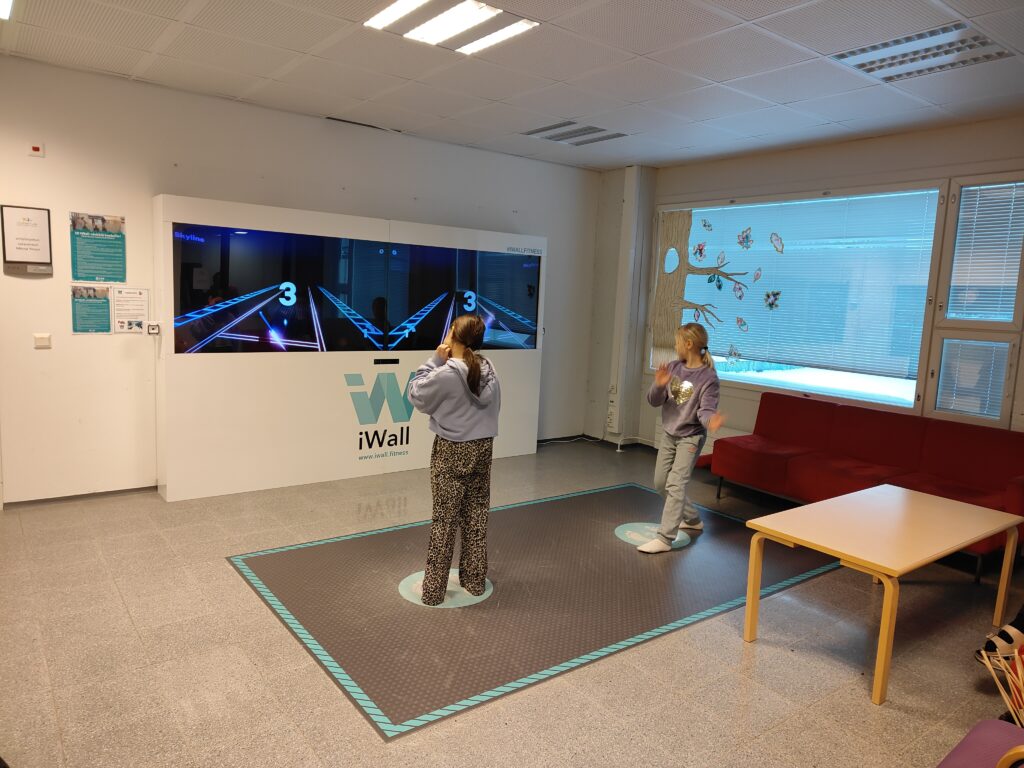
Commitment to inter-disciplinary research
It was wonderful to participate in various group discussions envisioning projects with researchers at JYU. It seemed that the imperative to collaborate was clear with a variety of collaborative partners, indicating a work ethic and commitment to inter-disciplinary research. Walking around campus helped me meet with various people who had helped in conceptualising and making possible this collaborative visit.
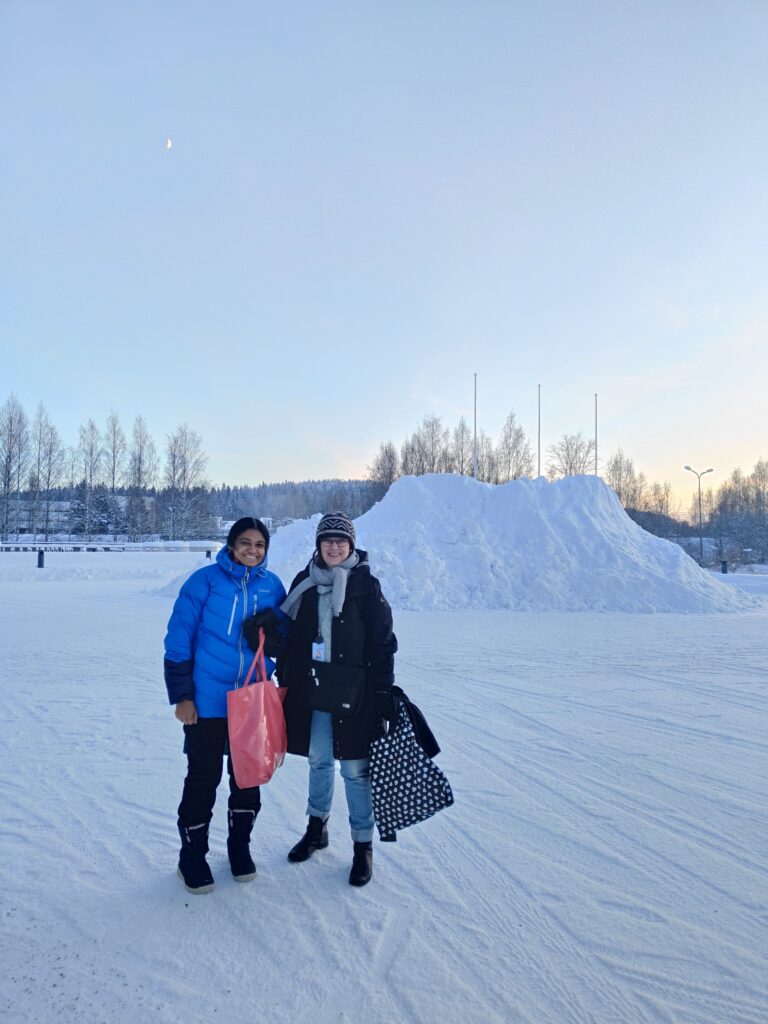
Visit to Helsinki colleagues
Exploring Helsinki on the fourth day was quite breathtaking, while soaking in various monuments and historically significant structures, including the University of Helsinki. Our meeting with Jenny Niu from the GINTL coordination team at University of Helsinki led to other explorations: particularly of The Playful Learning Centre. Lecturer, Jonna Kangas’s enthusiasm coupled with her detailed explanations of the specially made, sourced and arranged materials at the Centre, was enthralling. We also managed to glimpse engaged student teachers taking Math and Biology education lessons.

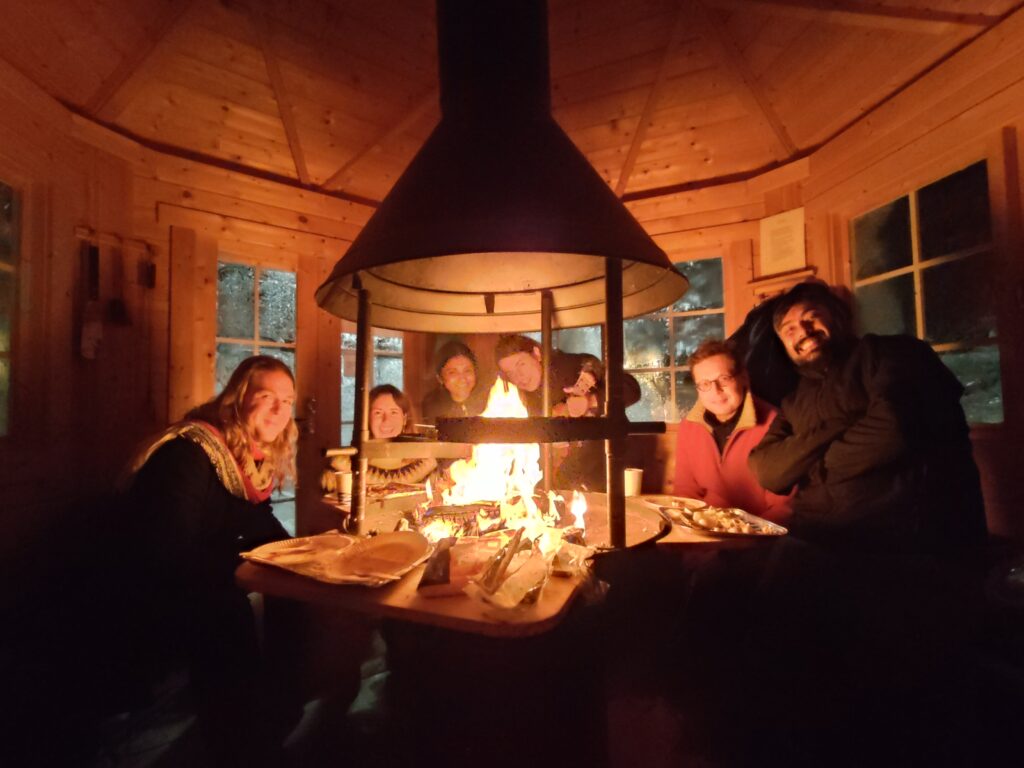
Throughout the week I experienced snow-clad landscapes and understood why the Finnish language accommodated multiple words and phrases to capture different emotions associated with snow and possibilities for outdoor play. Finally, the cultural experience of the Finnish sauna and a winter get-together at host, Dr. Kristof Fenyvesi’s cottage over a bonfire were remarkable both for its novelty and togetherness which characterised my Finland experience. My gratitude goes to the hosts at JYU and to GINTL for enabling this visit and opening possibilities for further collaboration.
Acknowledgements: I would like to thank several people associated with this visit and interactions: Kristof Fenyvesi, Apoorwa Hooda, Samuel Madtha, Matias Mäki-Kuutti, Orsolya Tuba, Takumi Yada, Heidi Layne, Jan Vanek, Olli-Pekka Malinen, Kati Clemens, Saana Mehtälä, Tiina Mäkelä, Sirpa Turpeinen, Manu Mäkinen, Minni Matikainen, Johanna Turunen, Hannu Moilanen, Tom Nevanpää, Jukka Sinnemäki, Jonna Kangas, Jenny Niu, Pia Krimark, Anna-Leena Kähkönen, and Anna-Maija Poikkeus.













